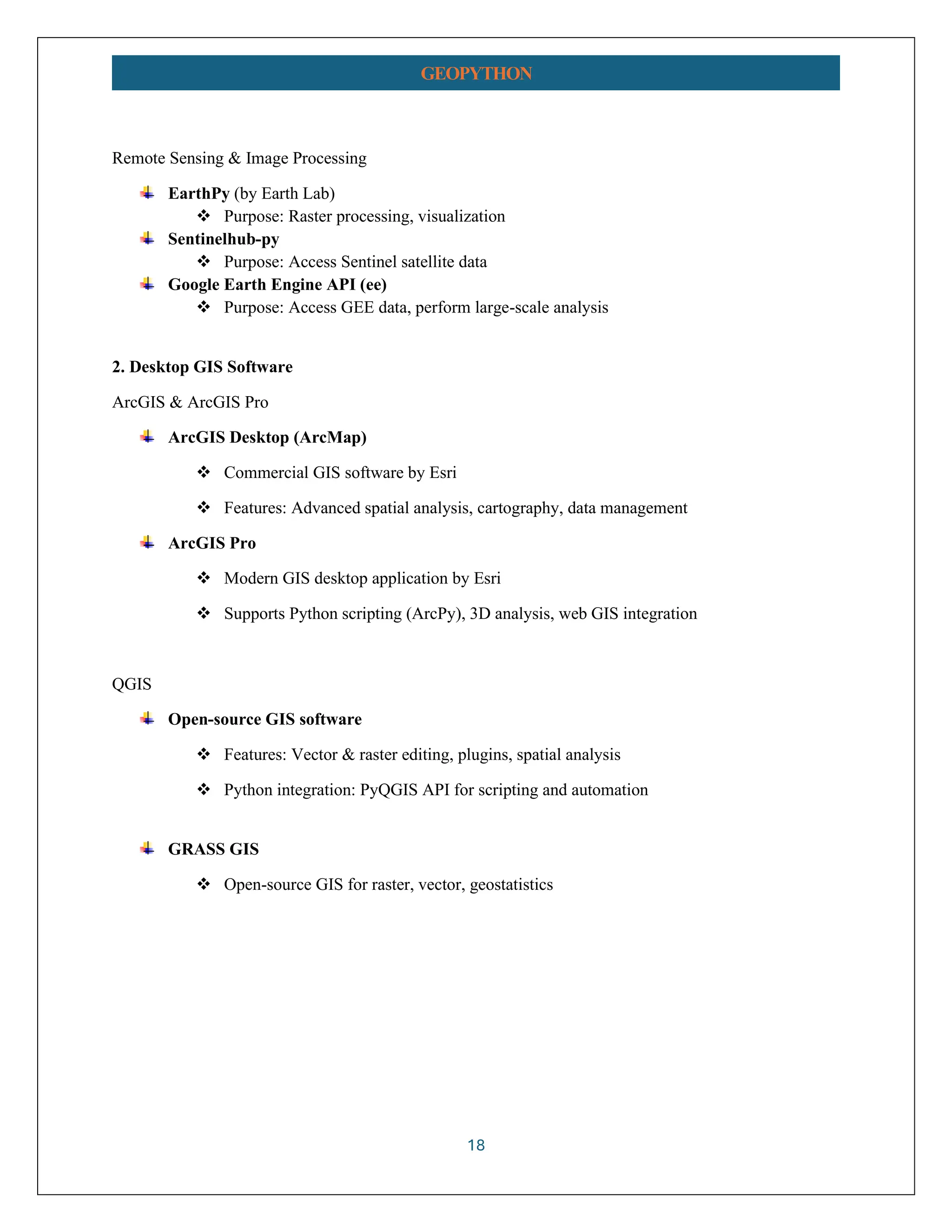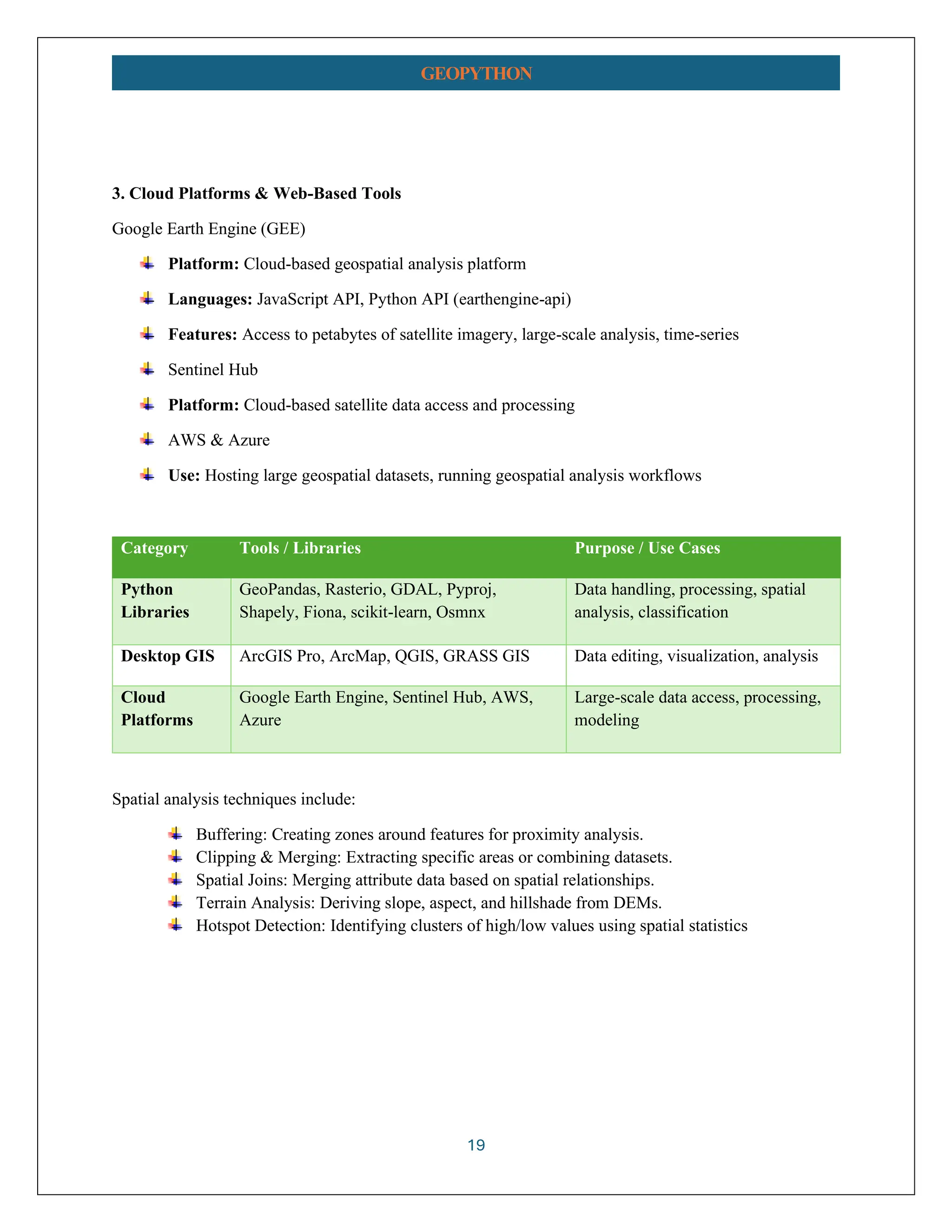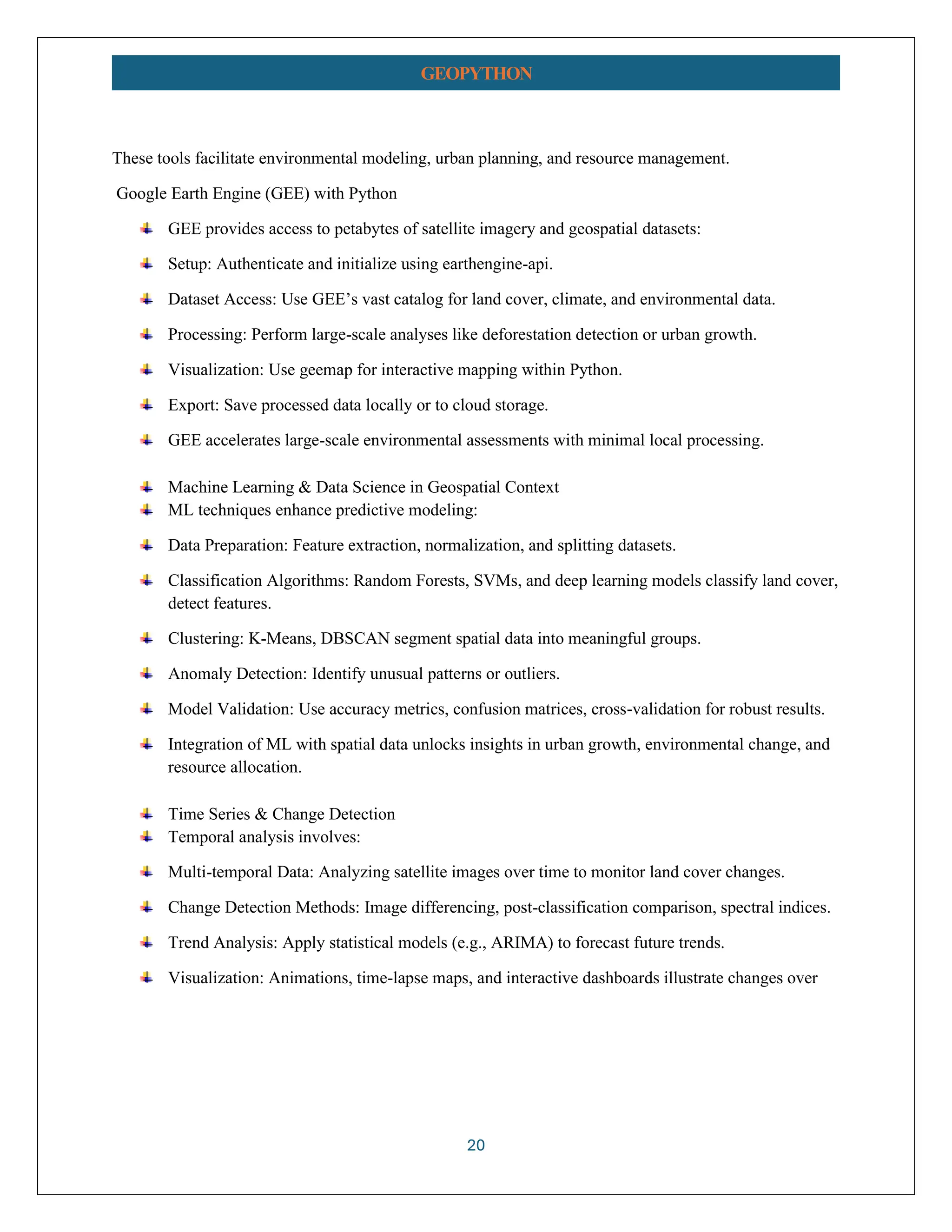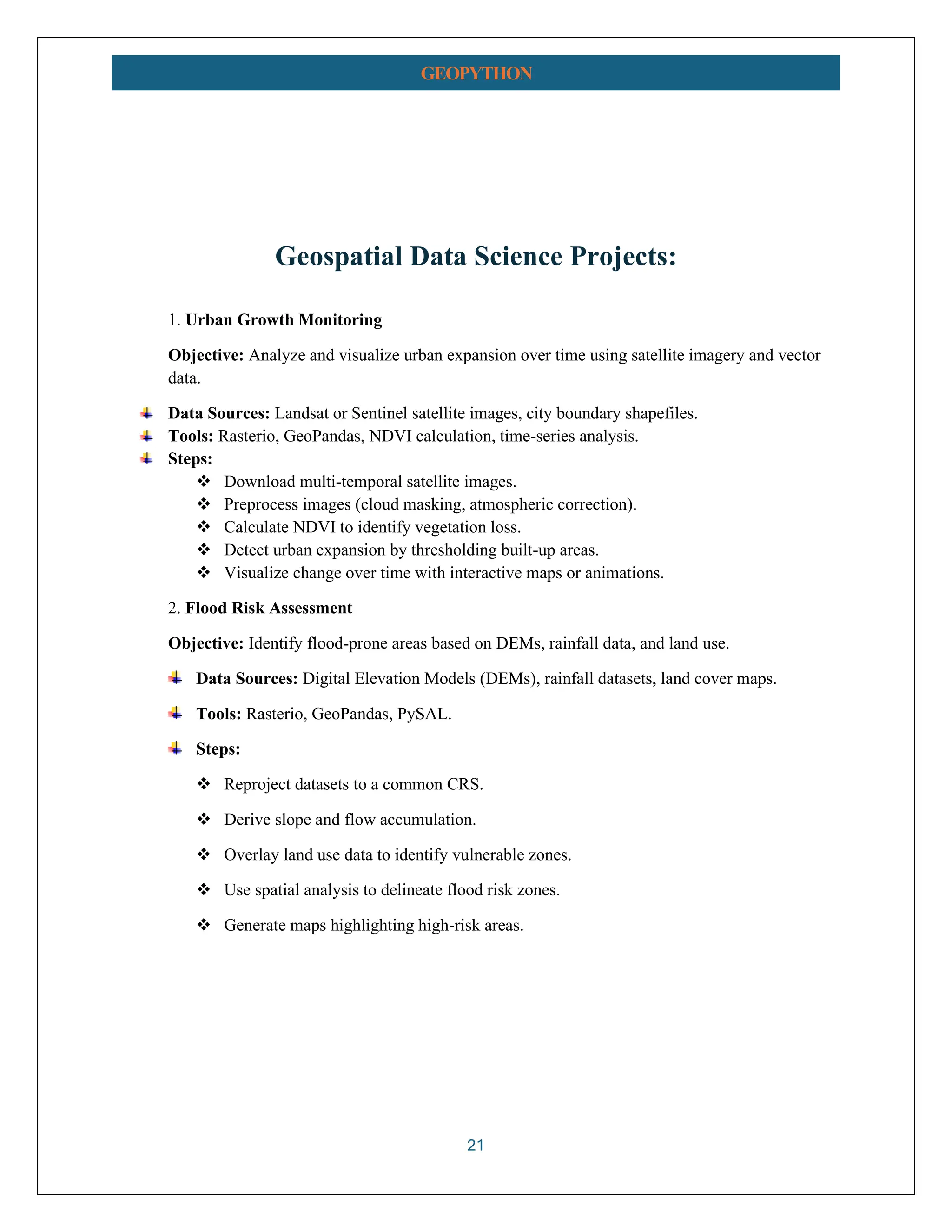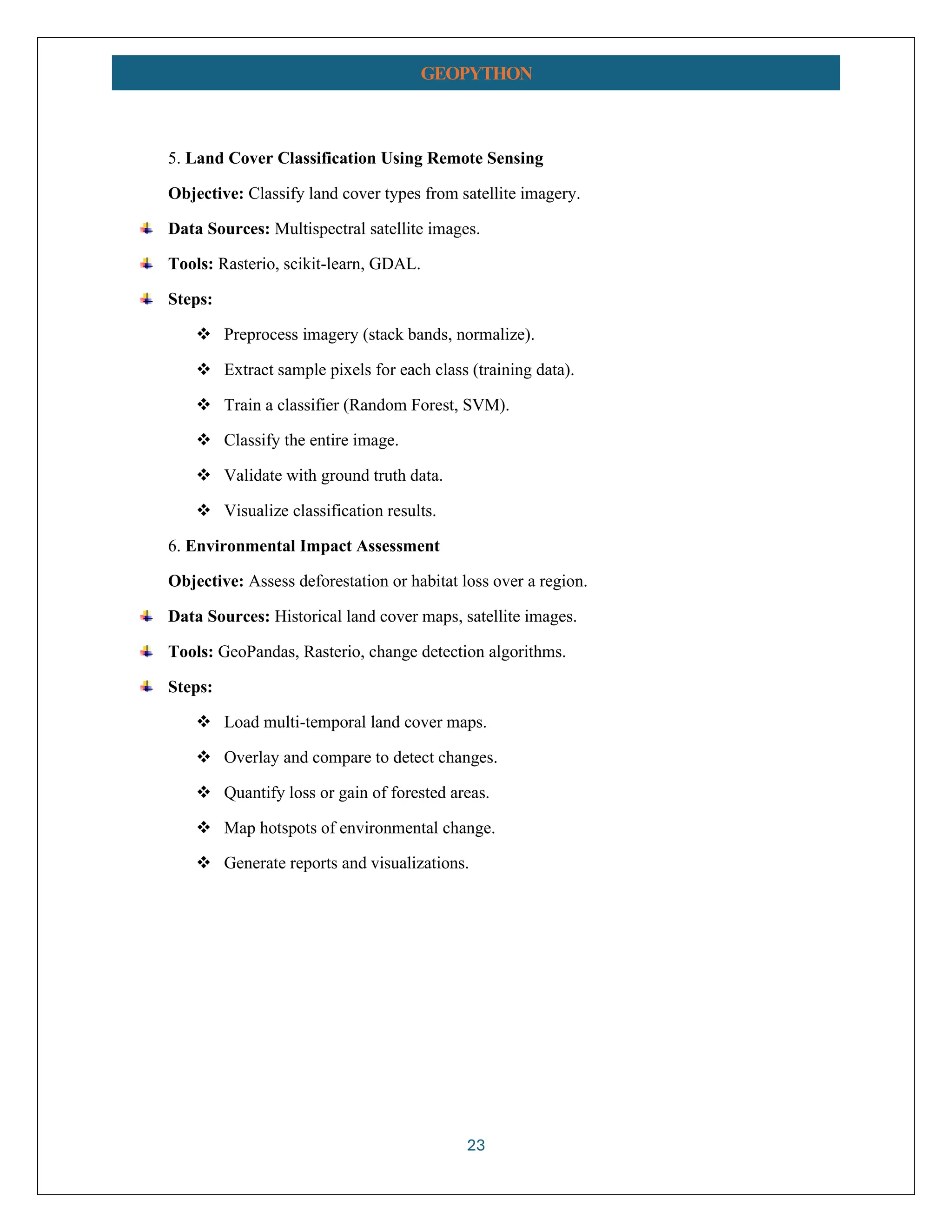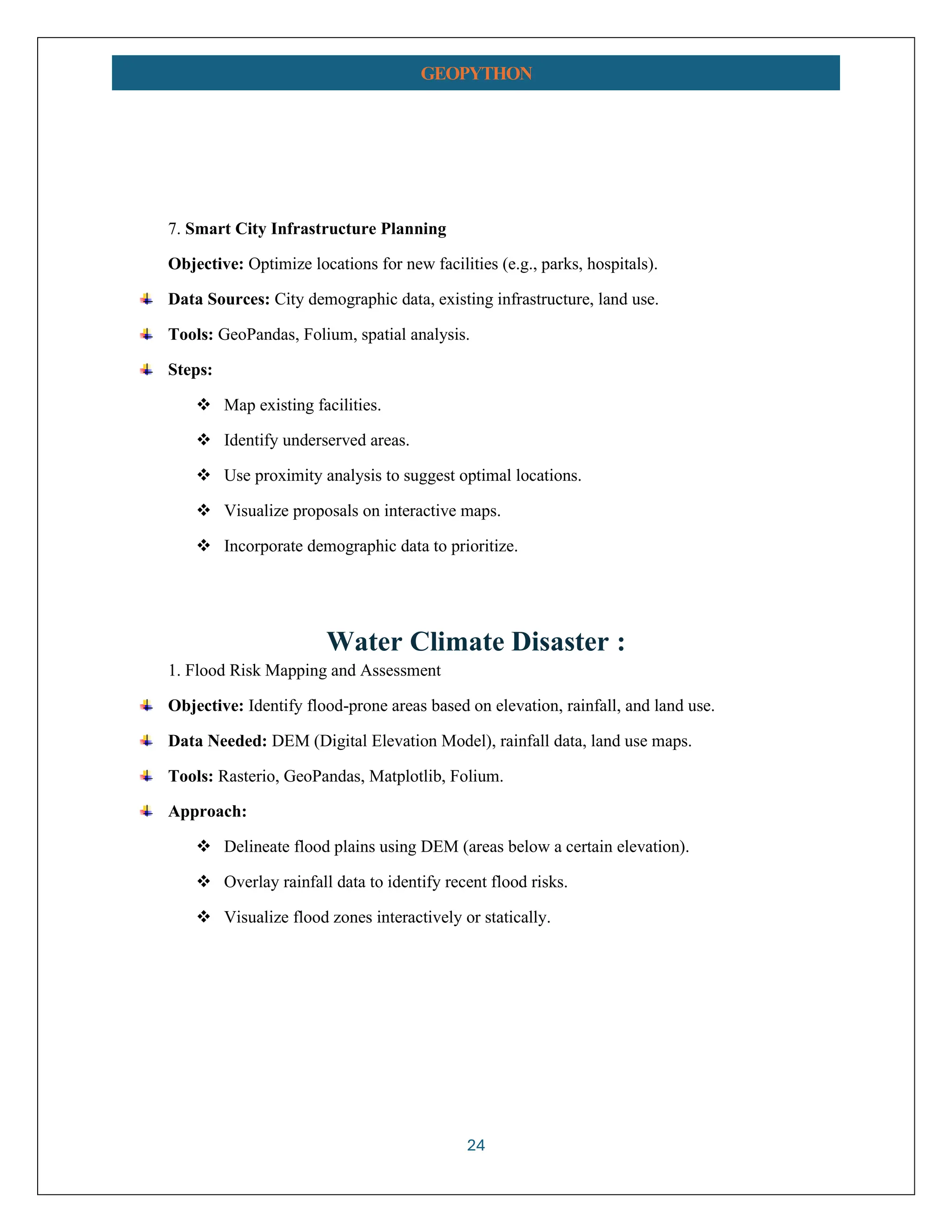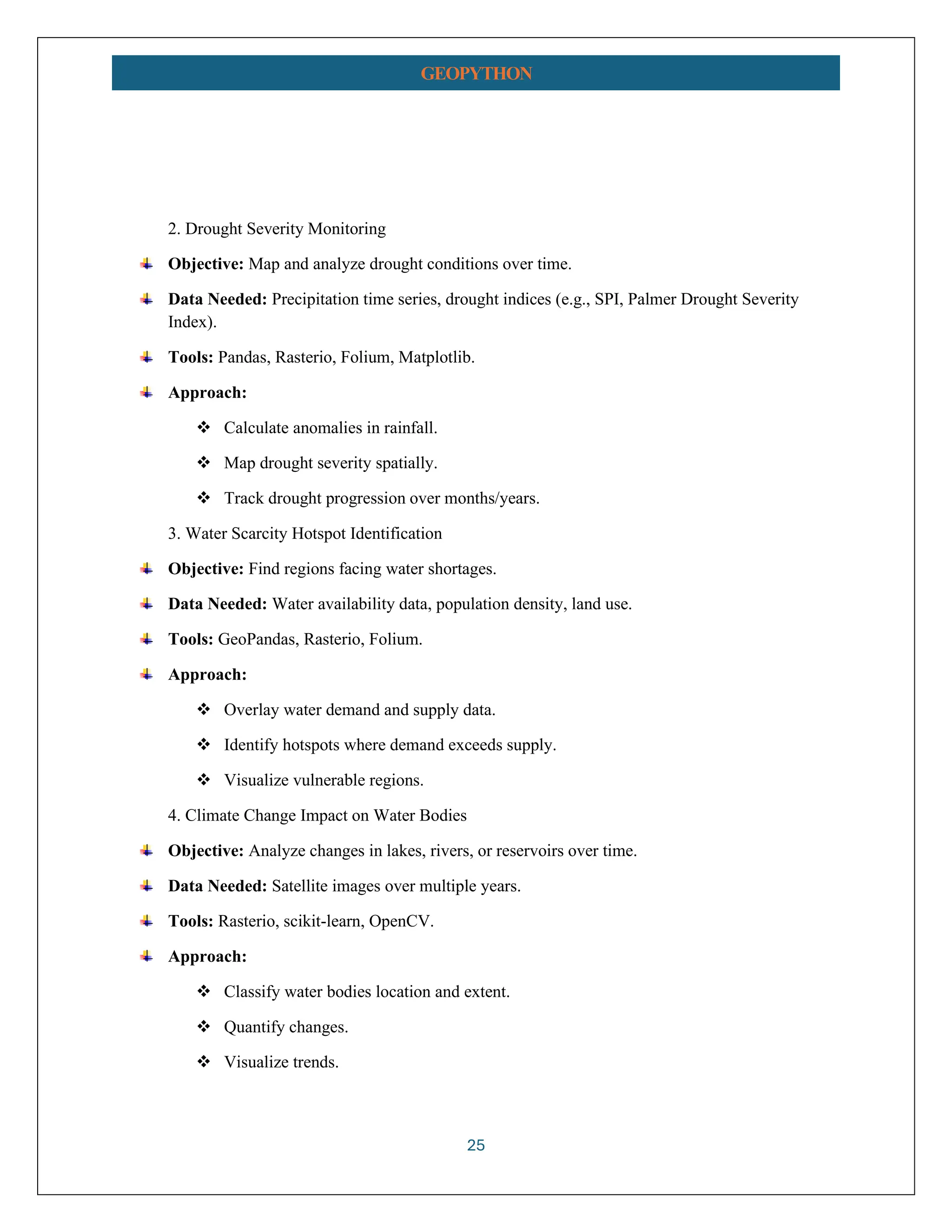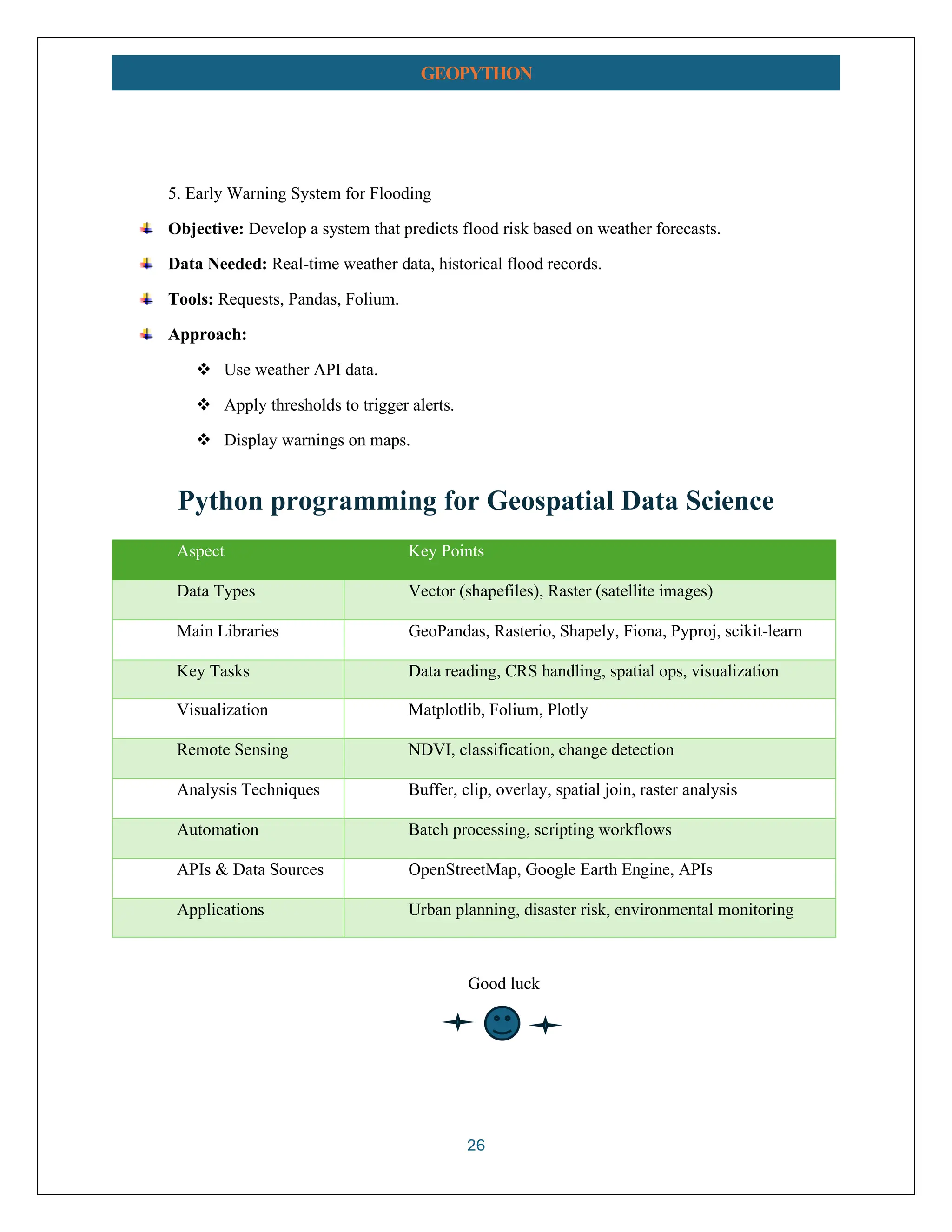🌍 Excited to Announce My New Book! 📘 I'm thrilled to share my latest publication: "Python Programming for Geospatial Data Science." This comprehensive guide covers the fundamentals of geospatial data analysis, remote sensing, GIS techniques, and how to harness the power of Python libraries like GeoPandas, Rasterio, Shapely, and more. Whether you're interested in urban planning, environmental conservation, disaster management, or transportation, this book provides practical insights, hands-on exercises, and real-world project examples to elevate your geospatial skills. Thank you for your support! Looking forward to empowering more geospatial enthusiasts and professionals in this exciting field. #GeospatialDataScience #Python #GIS #RemoteSensing #UrbanPlanning #EnvironmentalMonitoring #DataScience
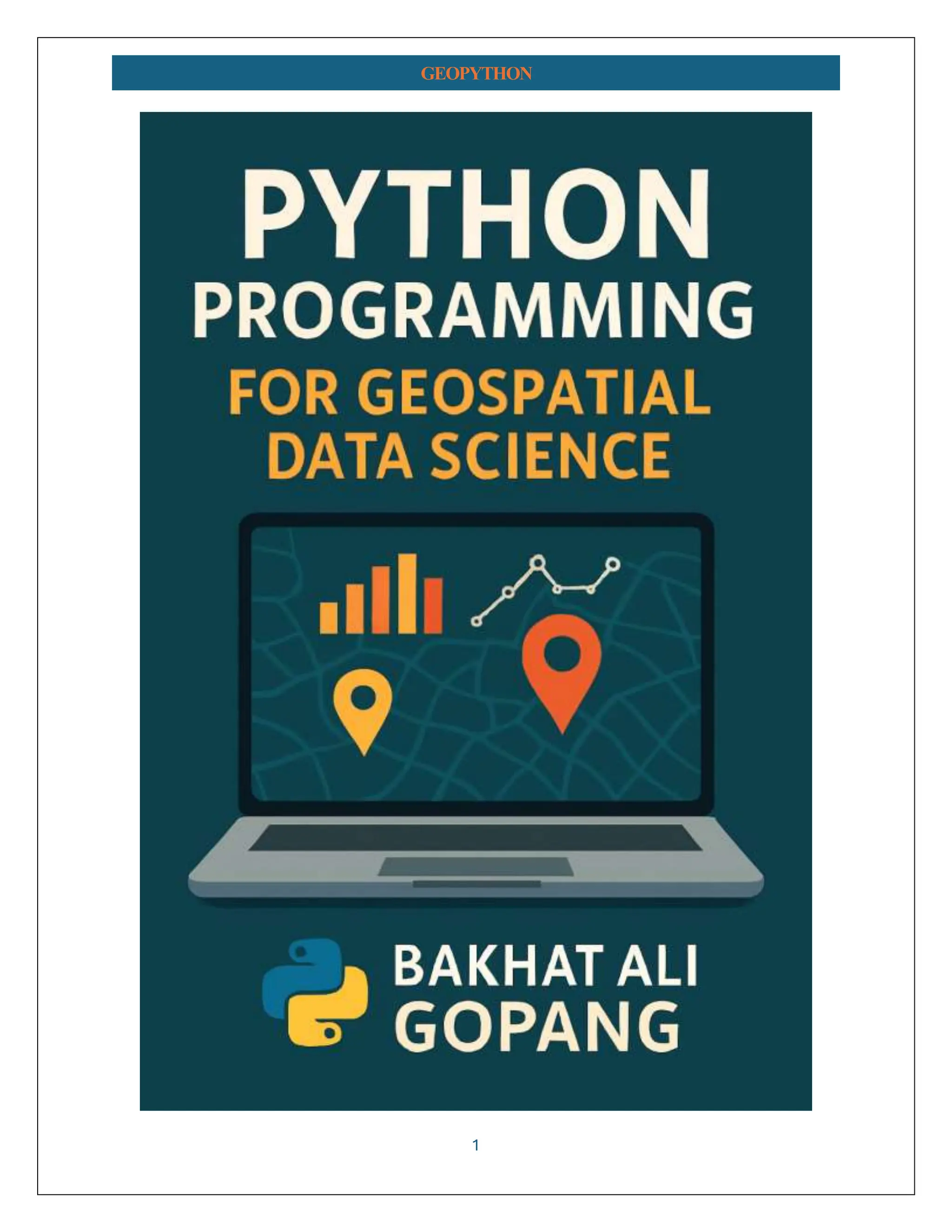

![3 GEOPYTHON Lab 1: Setting Up Python for Geospatial Data Step 1: Install Anaconda Step 2: Create and activate a dedicated environment conda create -n geo_env python=3.8 -y conda activate geo_env Step 3: Install essential geospatial libraries conda install geopandas rasterio jupyter -y Step 4: Launch Jupyter Notebook for interactive coding jupyter notebook Start exploring and analyzing geospatial data efficiently with Python! Basic Python for Geospatial Data Science 1. Variables and Data Types • Store data such as coordinates, attributes latitude = 40.7128 longitude = -74.0060 city_name = "New York" population = 8_336_817 2. Lists and Dictionaries • Manage collections of data # List of coordinates coords = [(40.7128, -74.0060), (34.0522, -118.2437)] # Dictionary for attributes city_info = { "name": "New York", "population": 8_336_817, "coordinates": (40.7128, -74.0060) } 3. Functions • Reusable blocks of code](https://image.slidesharecdn.com/geopythonbakhatali-250808173818-dae179b2/75/Python-Programming-for-Geospatial-Data-Science-BAKHAT-ALI-pdf-3-2048.jpg)
![4 GEOPYTHON def get_area(length, width): return length * width area = get_area(10, 5) 4. Conditional Statements • Make decisions if population > 1_000_000: print("Large city") else: print("Small city") 5. Loops • Iterate over data for city in ["NYC", "LA", "Chicago"]:print(city) 6. Importing Libraries • Use specialized tools for geospatial data Runimport geopandas as gpd import rasterio 7. Reading Geospatial Data • Read a shapefile with GeoPandas gdf = gpd.read_file('path_to_shapefile.shp') print(gdf.head()) 8. Plotting Data • Visualize geographic data gdf.plot()](https://image.slidesharecdn.com/geopythonbakhatali-250808173818-dae179b2/75/Python-Programming-for-Geospatial-Data-Science-BAKHAT-ALI-pdf-4-2048.jpg)
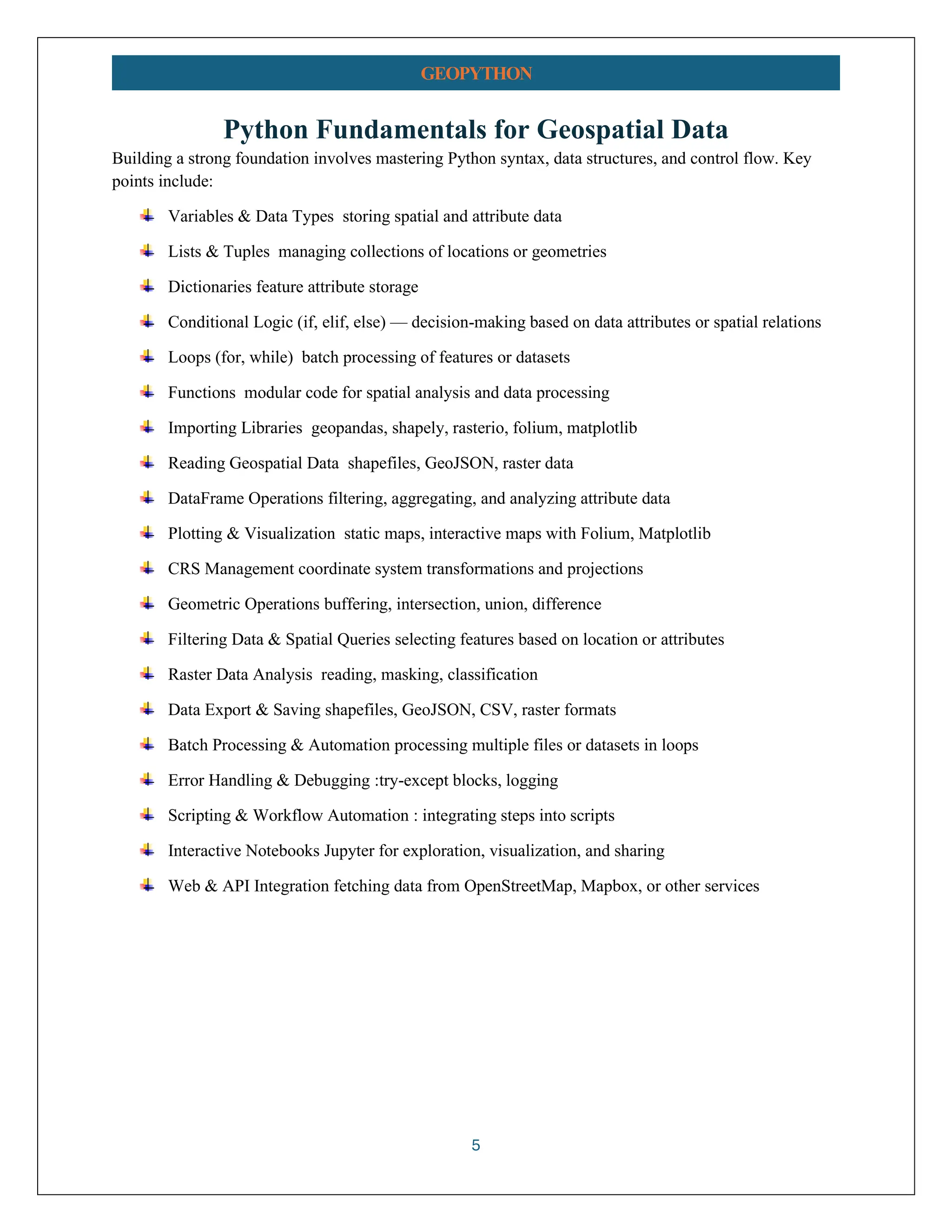
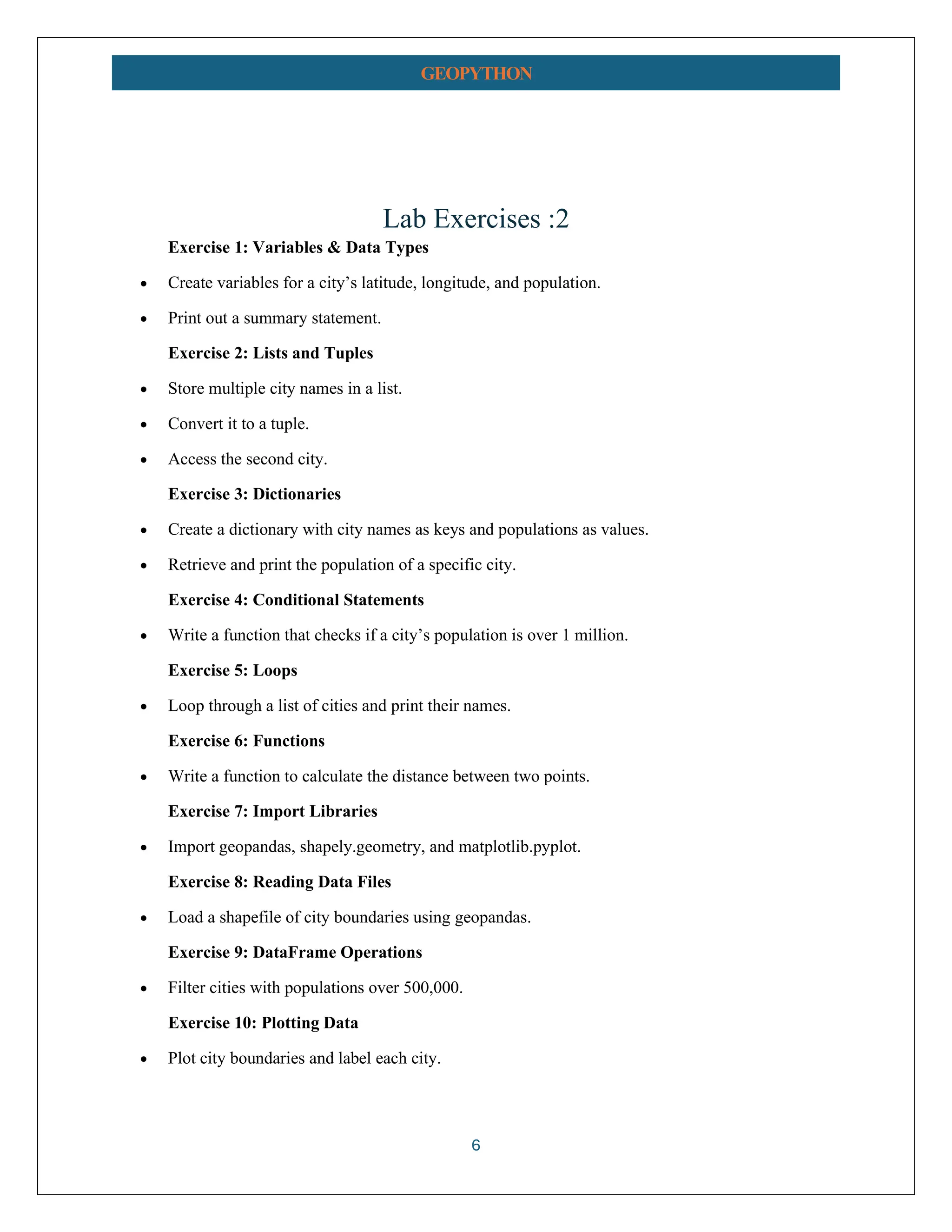
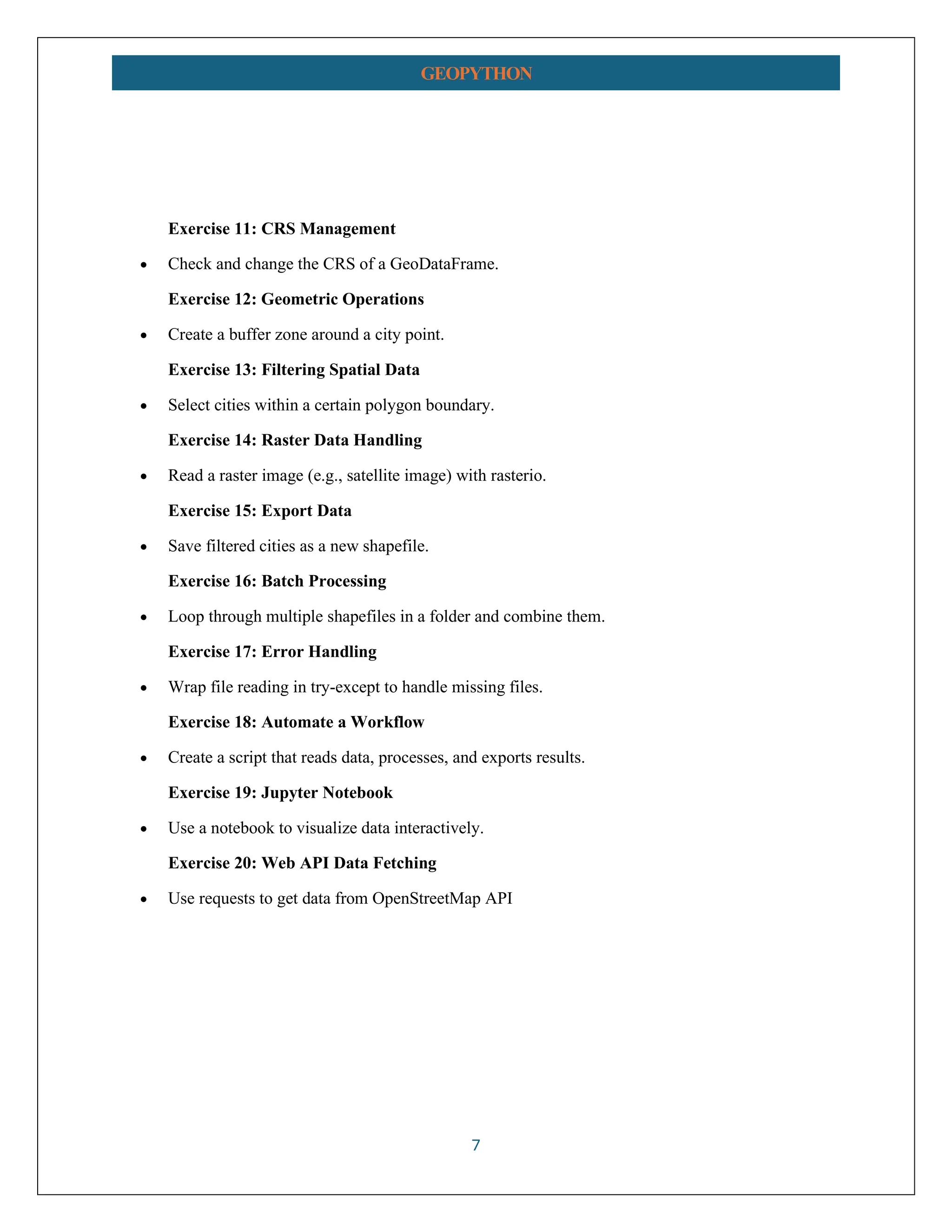
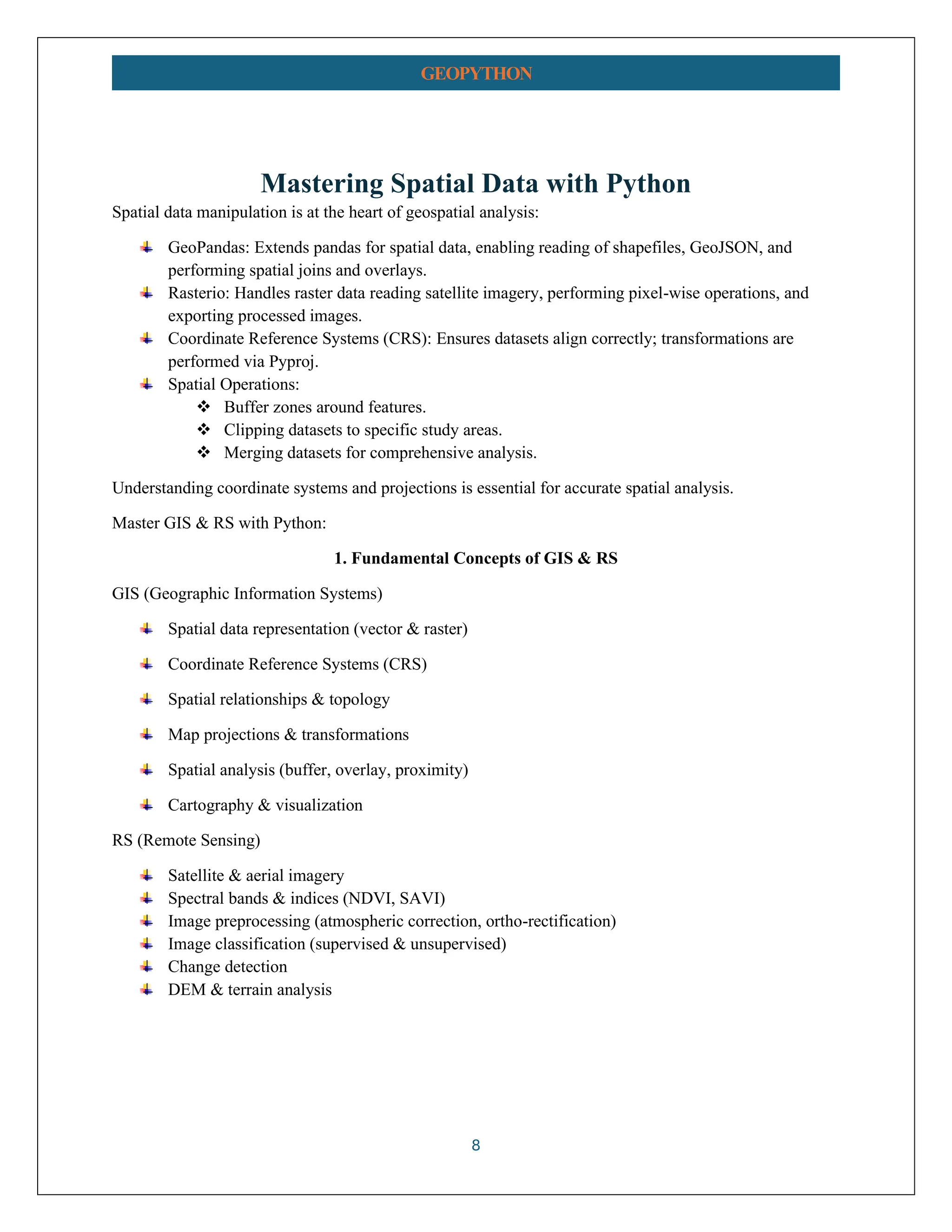
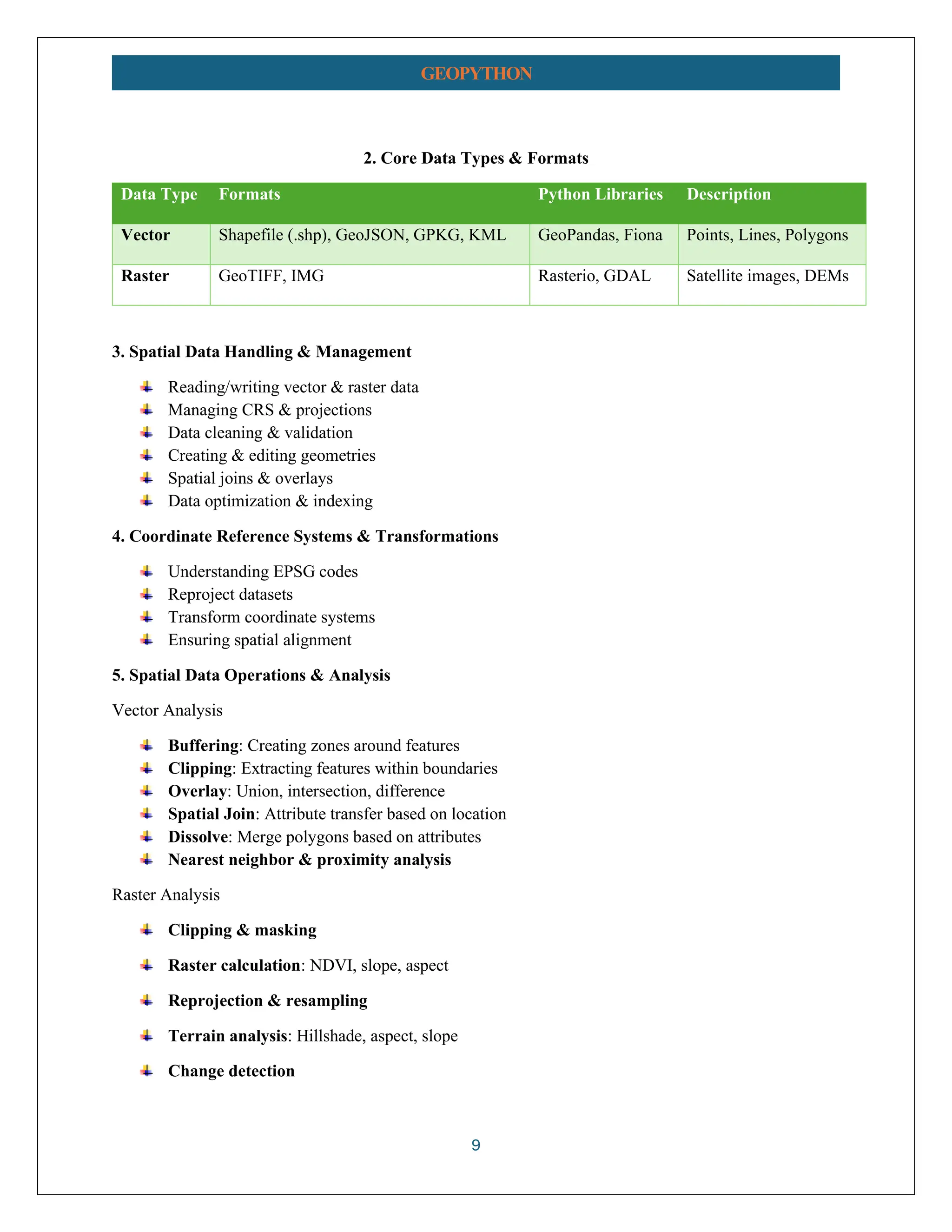
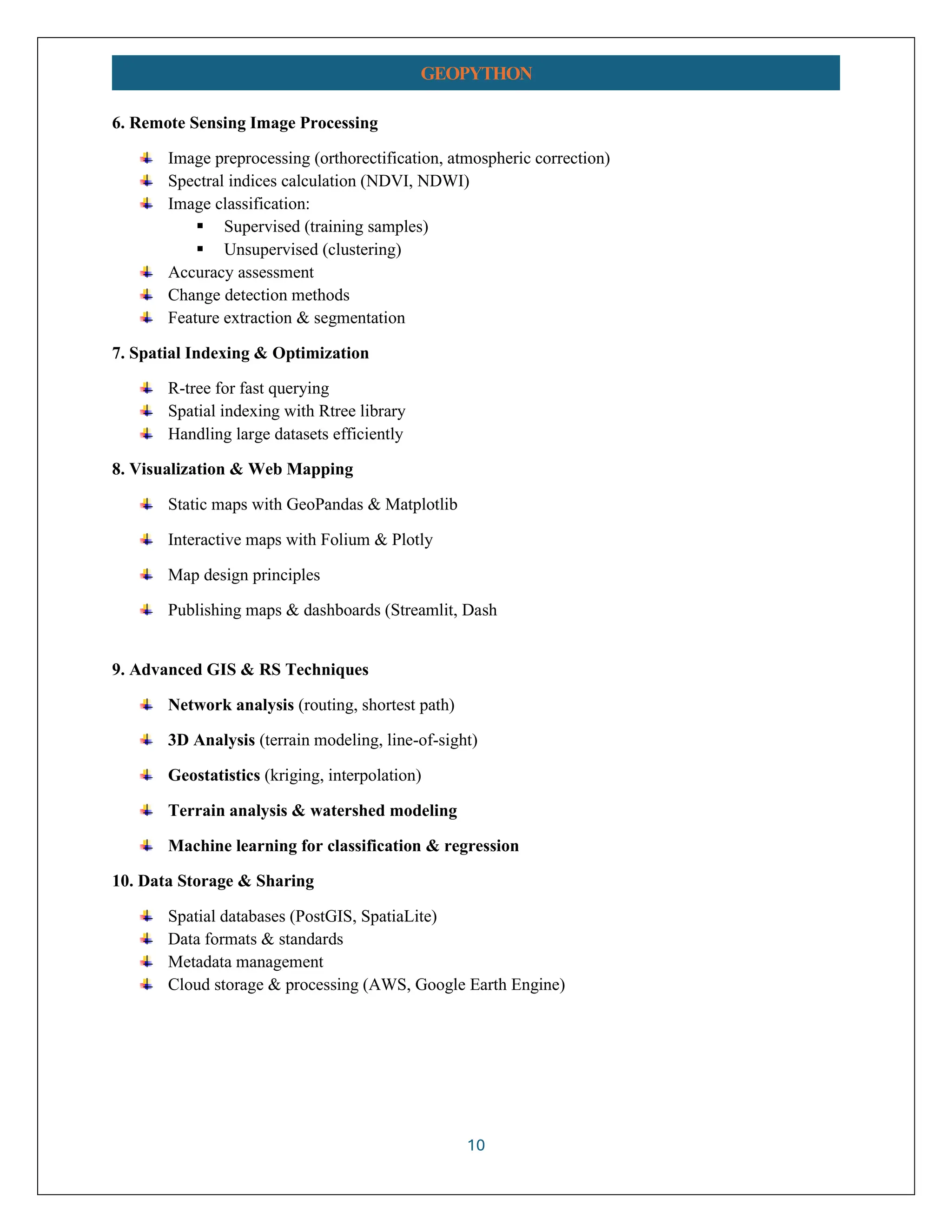
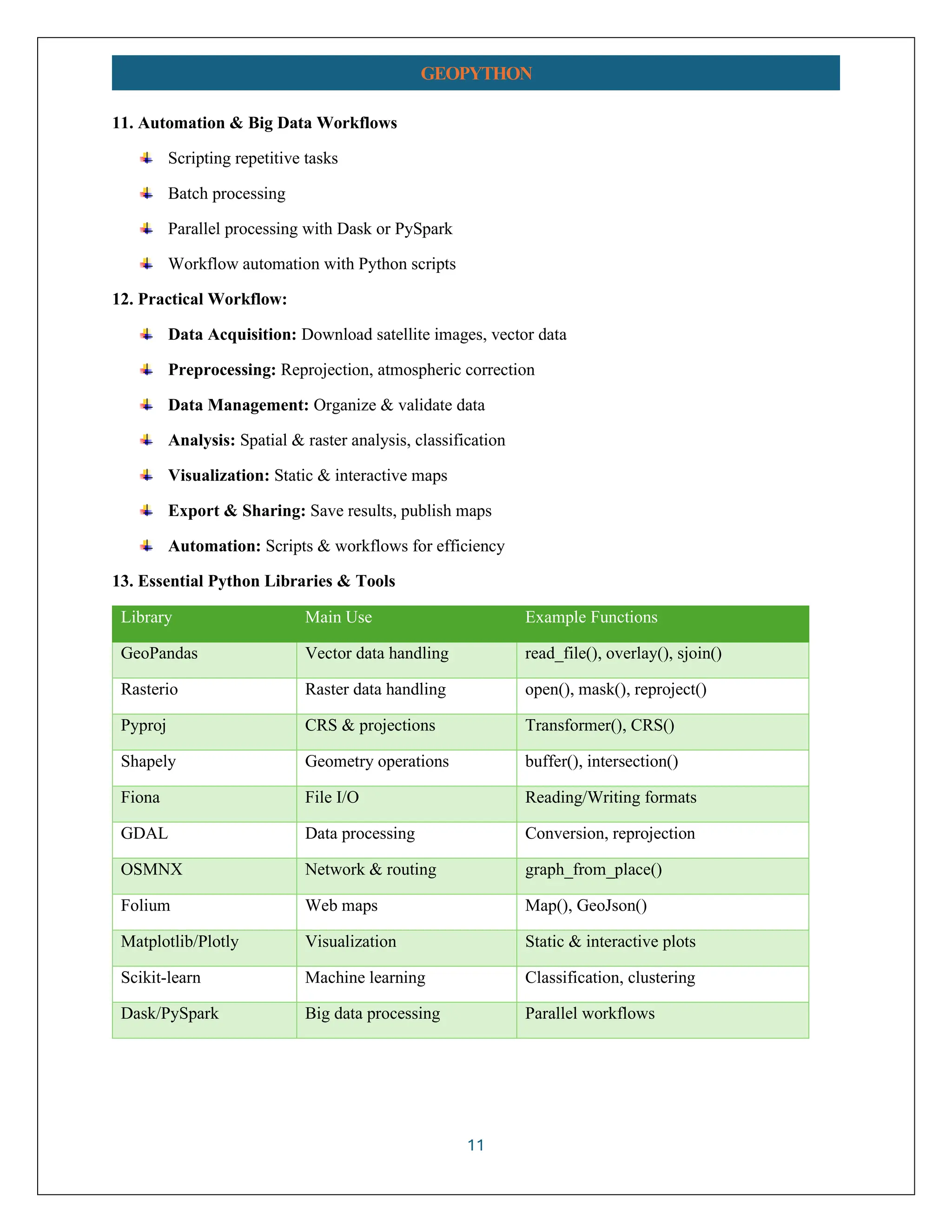
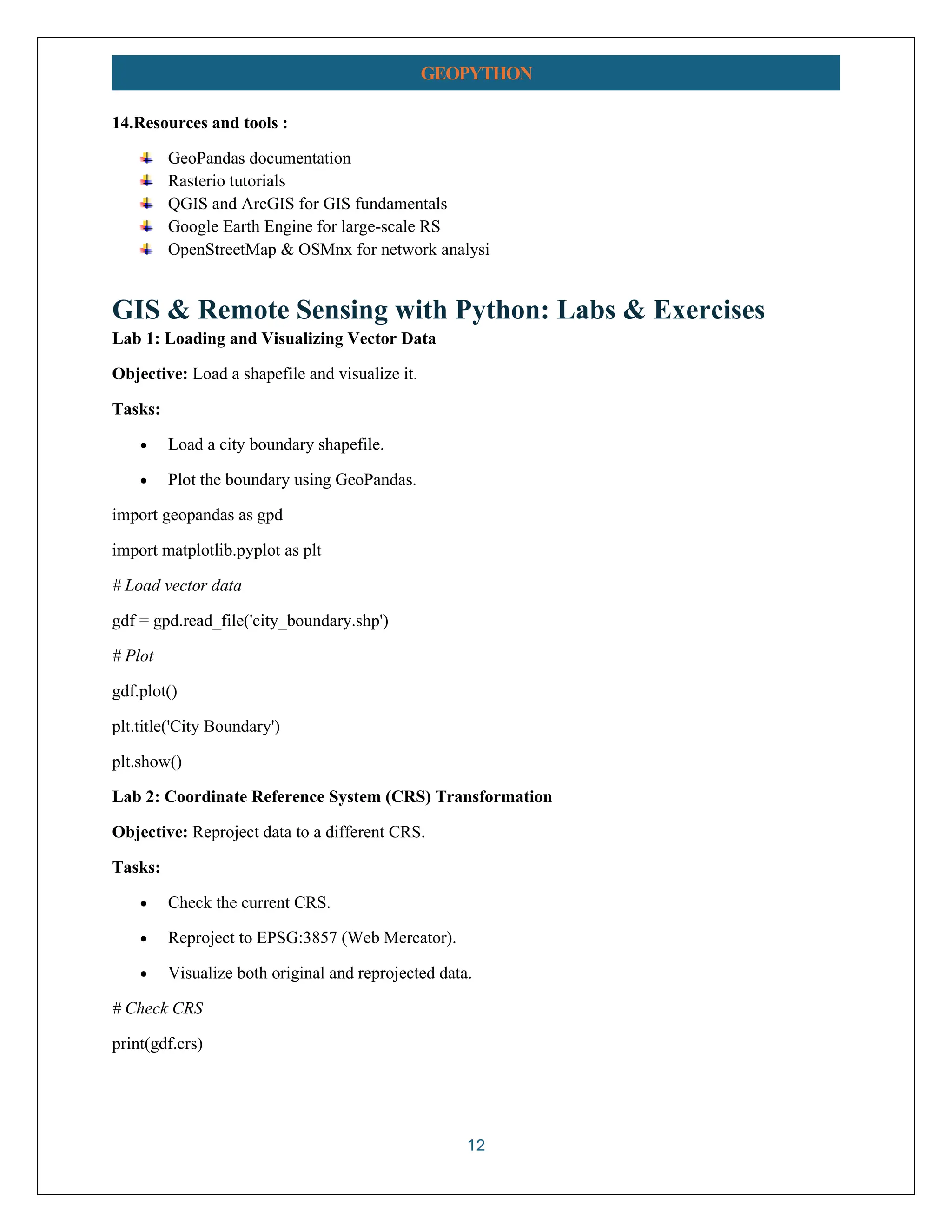
![13 GEOPYTHON # Reproject gdf_webmercator = gdf.to_crs(epsg=3857) # Plot original and reprojected fig, axes = plt.subplots(1, 2, figsize=(12, 6)) gdf.plot(ax=axes[0], title='Original CRS') gdf_webmercator.plot(ax=axes[1], title='Reprojected CRS (EPSG:3857)') plt.show() Lab 3: Spatial Clipping Objective: Clip a raster to the boundary of a vector polygon. Tasks: • Load a raster (satellite image). • Clip the raster to the city boundary. import rasterio from rasterio.mask import mask # Load vector boundary boundary = gdf.geometry.unary_union # Load raster with rasterio.open('satellite_image.tif') as src: out_image, out_transform = mask(src, [boundary], crop=True) out_meta = src.meta.copy() # Save clipped raster out_meta.update({"height": out_image.shape[1], "width": out_image.shape[2], "transform": out_transform}) with rasterio.open('clipped_satellite.tif', 'w', **out_meta) as dest: dest.write(out_image)](https://image.slidesharecdn.com/geopythonbakhatali-250808173818-dae179b2/75/Python-Programming-for-Geospatial-Data-Science-BAKHAT-ALI-pdf-13-2048.jpg)
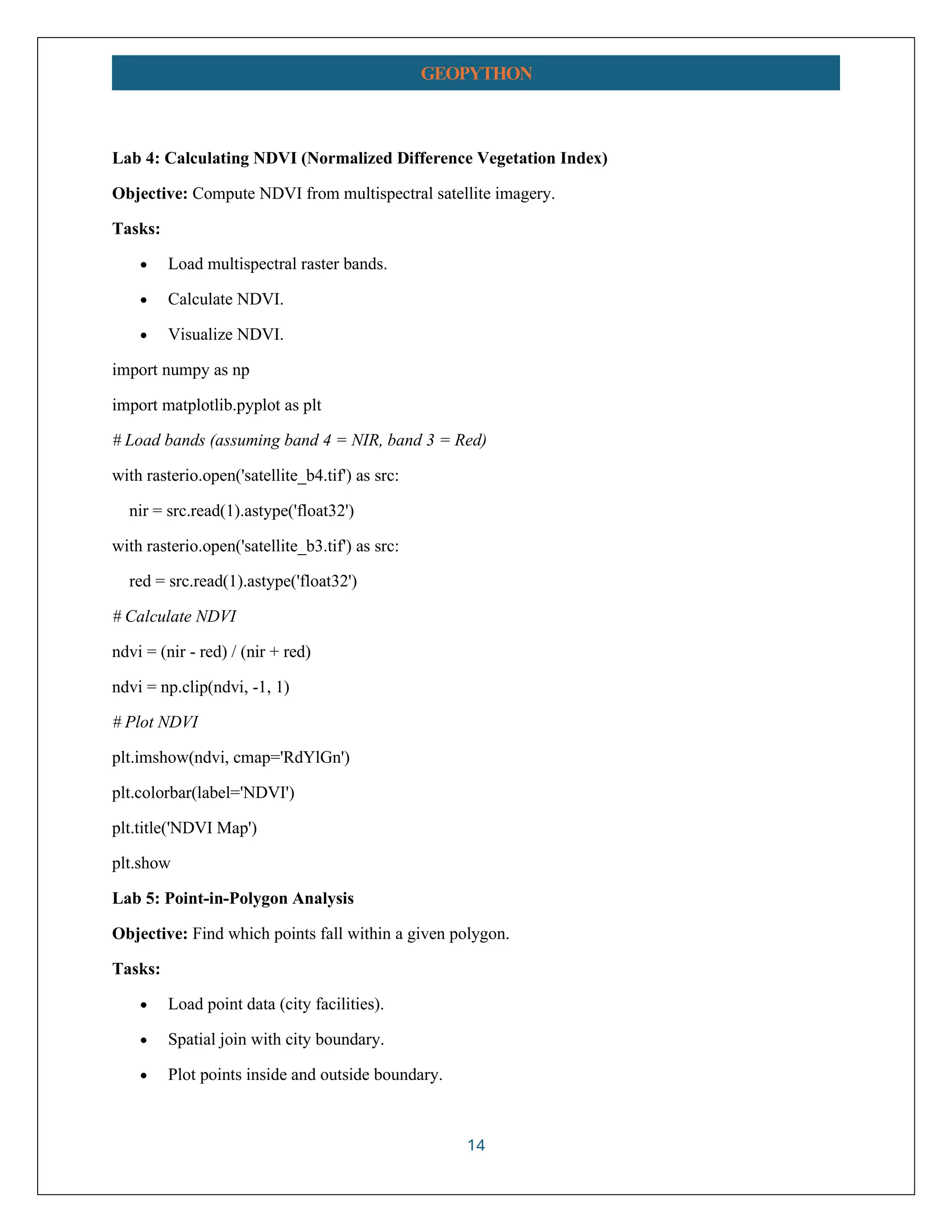
![15 GEOPYTHON # Load points points = gpd.read_file('facilities.shp') # Spatial join inside_points = gpd.sjoin(points, gdf, predicate='within') # Plot ax = gdf.plot(color='lightblue') inside_points.plot(ax=ax, color='red', marker='o') plt.title('Facilities within City Boundary') plt.show() Lab 6: Creating an Interactive Map with Folium Objective: Visualize vector data interactively. Tasks: • Load boundary data. • Plot on Folium map. • Add popup info. import folium # Convert GeoDataFrame to GeoJSON geojson_data = gdf.to_json() # Initialize map m = folium.Map(location=[gdf.geometry.centroid.y.mean(), gdf.geometry.centroid.x.mean()], zoom_start=12) # Add GeoJSON layer folium.GeoJson(geojson_data, name='City Boundary').add_to(m) # Save map m.save('city_boundary_map.html')](https://image.slidesharecdn.com/geopythonbakhatali-250808173818-dae179b2/75/Python-Programming-for-Geospatial-Data-Science-BAKHAT-ALI-pdf-15-2048.jpg)
![16 GEOPYTHON Lab 7: Network Routing with OSMnx Objective: Find shortest path between two points. Tasks: • Download road network. • Calculate shortest route. import osmnx as ox # Get graph G = ox.graph_from_place('City, Country', network_type='drive') # Find nearest nodes to start and end points orig_point = (latitude1, longitude1) dest_point = (latitude2, longitude2) orig_node = ox.nearest_nodes(G, orig_point[1], orig_point[0]) dest_node = ox.nearest_nodes(G, dest_point[1], dest_point[0]) # Calculate shortest path route = ox.shortest_path(G, orig_node, dest_node, weight='length') # Plot route fig, ax = ox.plot_graph_route(G, route) Spatial Analysis & Modeling Essential Libraries, Software, and Platforms for Geospatial Analysis 1. Python Libraries for Geospatial Analysis Core Geospatial Libraries GeoPandas ❖ Purpose: Handling vector data (shapefiles, GeoJSON) ❖ Functions: Reading, writing, spatial joins, overlays ❖ Example: gpd.read_file()](https://image.slidesharecdn.com/geopythonbakhatali-250808173818-dae179b2/75/Python-Programming-for-Geospatial-Data-Science-BAKHAT-ALI-pdf-16-2048.jpg)

